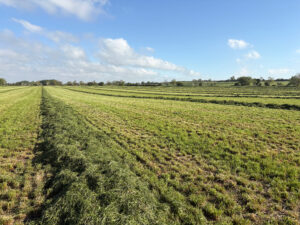In June 2021, members of the Airports Council International (ACI) committed to reaching Net Zero carbon emissions by 2050. The ACI urged the world’s governments to support its member airports in doing so. At that time, the UK government was concluding its consultation period for its own Jet Zero strategy for UK aviation, including airports, and it published its report Jet Zero Strategy: Delivering Net Zero aviation by 2050 in July this year. The target for airports to decarbonise in 2040, ahead of the industry as a whole.
The role of water in carbon Net Zero
While the Jet Zero targets are based on carbon emissions, a fully sustainable airport must include water efficiency. In its report Net Zero and the Role of Water Efficiency, the not-for-profit water efficiency campaigning group Waterwise looks at the role that “reducing water consumption, even by modest amounts, can play in delivering significant reductions in greenhouse gas emissions and helping society reach Net Zero”. One reason for this is that “10% of the world’s greenhouse gas emissions come from water use, storage and distribution”. Water efficiency is not specified in the policy objectives of Jet Zero, but systems efficiencies policy is the area most affecting airports.
What airports are currently doing
Edinburgh Airport has already implemented a number of strategies to push it towards Net Zero, and in 2021 it achieved carbon neutral status for scope 1 and 2 emissions. In terms of water, there was a 59% reduction in usage in 2021 compared with 2019, achieved in part through more efficient leak detection, although consumption would have been affected in 2020/21 by pandemic restrictions and the sharp reduction in flight numbers.
In its 2022 sustainability strategy, Heathrow Airport stated its commitment to reducing unaccounted water use by 15% compared with 2019 by expanding metering coverage to help reduce leakage.
In 2021 Bristol Airport was awarded neutrality status for scope 1 and 2 emissions by the ACA, hitting its target for carbon neutral emissions four years ahead of schedule. It announced that its next aim is to become Net Zero by 2030 – 20 years earlier than the ACI is calling for. Unfortunately, there is no mention of water efficiency as part of Bristol Airport’s sustainability strategy.
The Manchester Airport Group, which is responsible for London Stansted Airport, Manchester Airport and East Midlands Airport, aims to be Net Zero by no later than 2038, and ten years ahead of the UK Government’s goal.
Water efficiency in airports
If your airport is to establish an all-round sustainability strategy, water efficiency needs to be an important part of that. Given the size of airports and the vast numbers of passengers, crew and staff that use them, water efficiency could also save significant amounts of money.
Installing and monitoring water meters is a vital element of becoming more water efficient. It is a simple way to identify unexplained spikes in water use, which usually indicate unseen water leaks. This knowledge will enable you to find and fix the leaks quickly, saving millions of litres of wasted water which your airport would otherwise be paying for.
Practical measures that will make a big difference include the use of grey water and collected rainwater to flush toilets, wash vehicles and pathways, and water the grass in the runway safety areas. Grey water recycling also reduces the amount of wastewater your airport will produce and pay for.
Other water efficiency solutions include installing automatic flushing on urinals and toilets and installing sensor taps.
Water efficiency audits for airports
We know that airport facilities managers are already aware of water management, as water and wastewater are so highly regulated at airports, and critical to business and safety. Airports globally are also highly innovative in water recycling and waste reduction. But we do believe that refreshing your understanding of your water usage from time to time makes it easier to implement water reduction strategies. To ensure your airport is as resource efficient as possible, a great place to start is by conducting a water efficiency audit of your site portfolio.
An effective water audit will glean innovative solutions your airport can implement to address immediate concerns and long-term efficiency and sustainability targets, as well as supporting compliance needs, corporate social responsibility (CSR) plans, and ESG reporting.
- Reduce volumetric water charges
- Contribute to water network resilience
- Reduce both direct and indirect emissions
- Conserve natural resources
- Demonstrate best sustainable practices and attract environmentally aware customers



